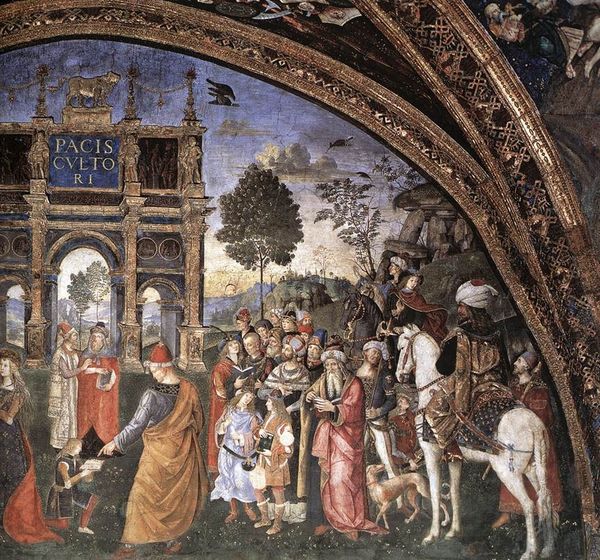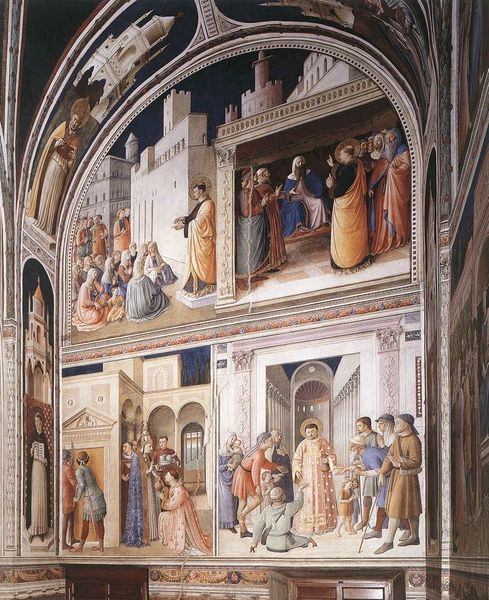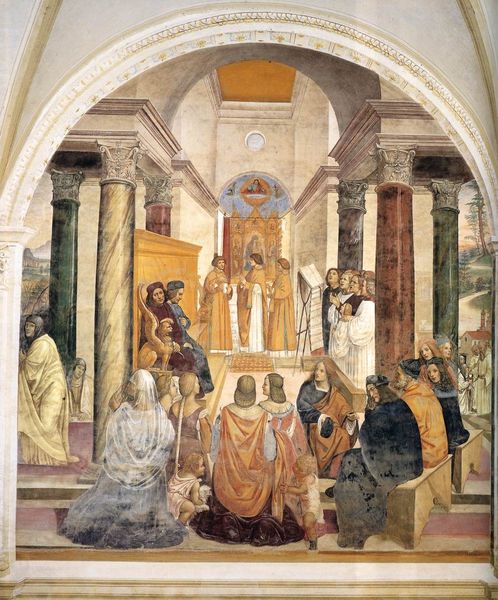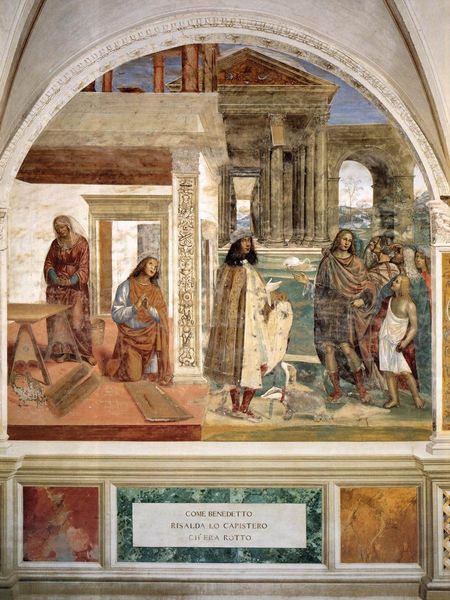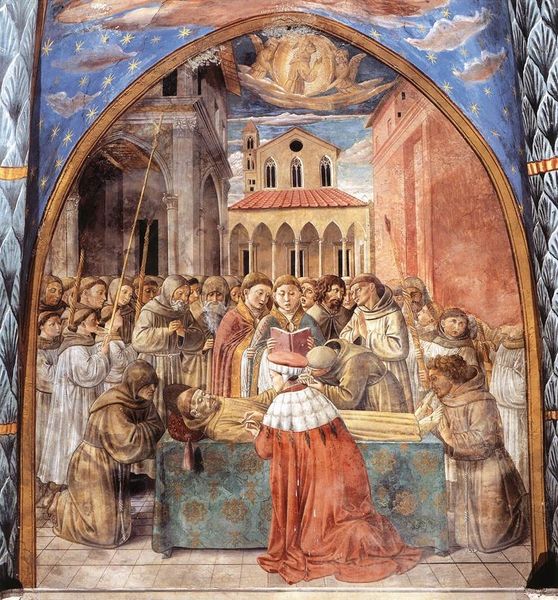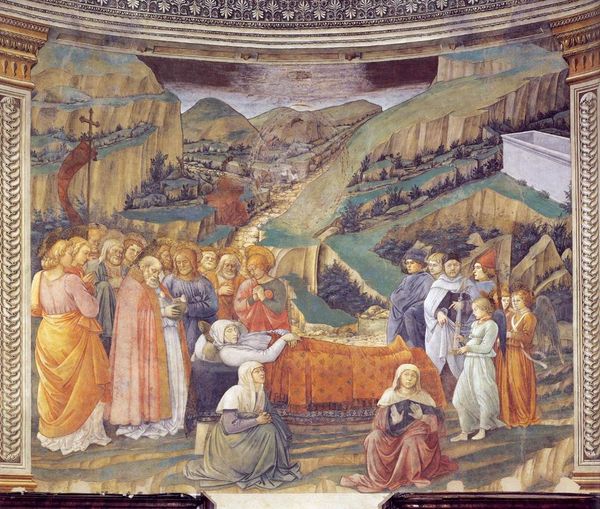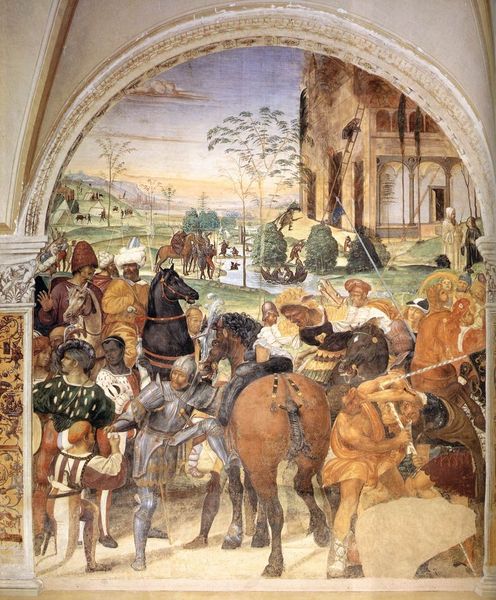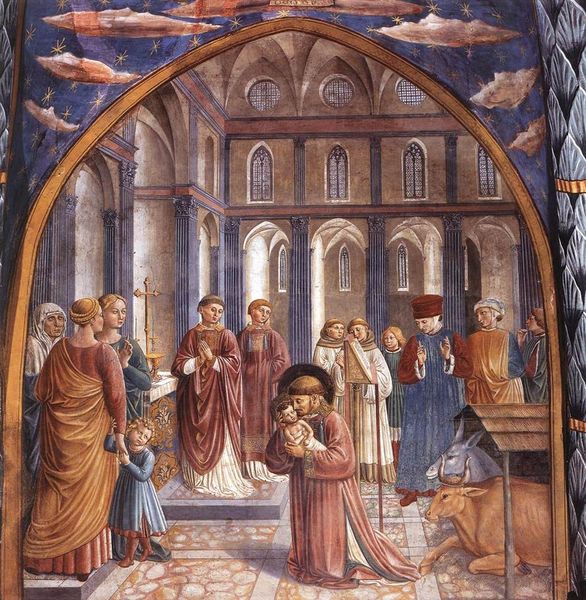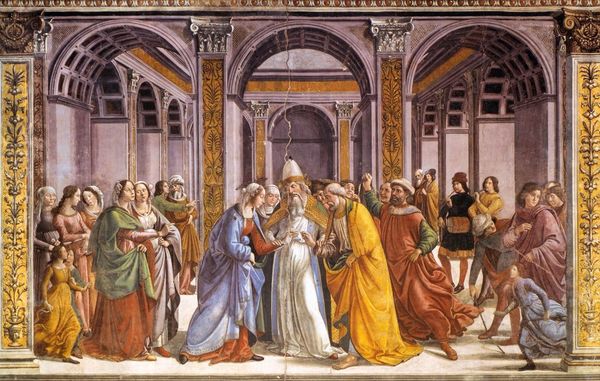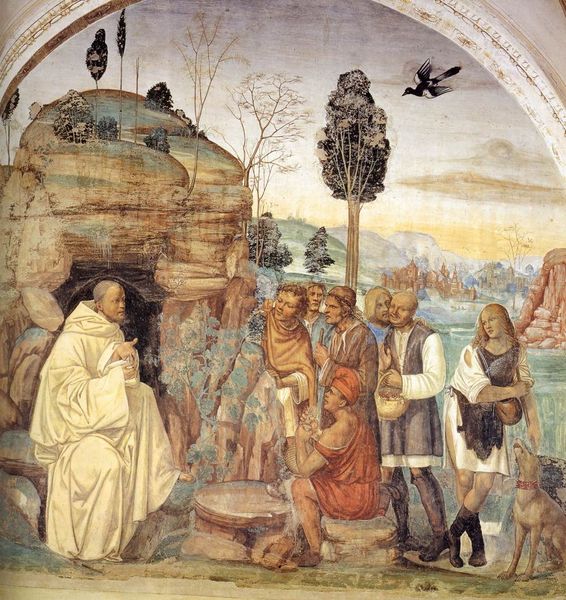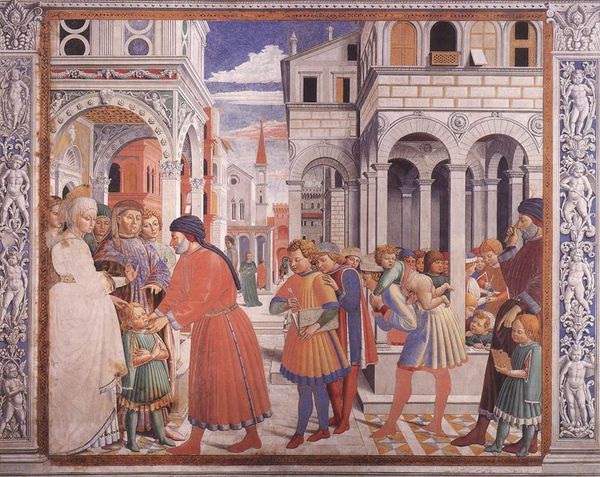
painting, fresco, photography
#
high-renaissance
#
narrative-art
#
painting
#
sculpture
#
holy-places
#
figuration
#
historic architecture
#
fresco
#
traditional architecture
#
photography
#
mythology
#
history-painting
#
italian-renaissance
#
historical building
Copyright: Public domain
Editor: Here we have Il Sodoma's "Life of St. Benedict, Scene 12: Benedict Receives Maurus and Placidus," a fresco dating back to 1508. There's such a large crowd depicted here, and the architecture framing the scene seems grand and somewhat imposing. How would you interpret the meaning behind all these figures within a historical context? Curator: Well, considering this was painted during the High Renaissance, and looking at its location—presumably part of a monastic complex—the sheer number of figures is deliberate. Sodoma uses the space to visualize the burgeoning influence of the Benedictine order. What appears to be a reception is, in a sense, a symbolic display of power and social impact. How do you think the artist portrays St. Benedict within that context? Editor: He is very central, with that big, cream-colored robe that catches the light. Everyone else seems to look at him, almost seeking his approval. It is like a staging of influence and the saint's control of his image. Curator: Precisely. Think about who commissioned this fresco and why. Monasteries weren't just religious centers, they were also landowners, economic players. Images like this reinforced their social legitimacy and advertised their piety to the public, didn’t they? Do the architectural settings also echo this agenda? Editor: That’s very clear when we look at them more closely. These are no peasant dwellings; these are imposing, Renaissance structures in this very organized arrangement, hinting at the power and established place that Benedict and his Order have in this time and place. They provide a stunning background. Curator: Exactly. It’s not just a biblical scene; it’s a statement about institutional power rendered during the High Renaissance through the conventions of its artistry, with particular Renaissance tastes evident in the details of buildings and clothing. It shows us how art served to legitimize authority. Editor: I never considered how literally an image could "advertise" an institution. This changes how I will view art, seeing it in its societal context. Curator: And understanding that context lets us decode the multiple layers of meaning an artwork can hold.
Comments
No comments
Be the first to comment and join the conversation on the ultimate creative platform.
